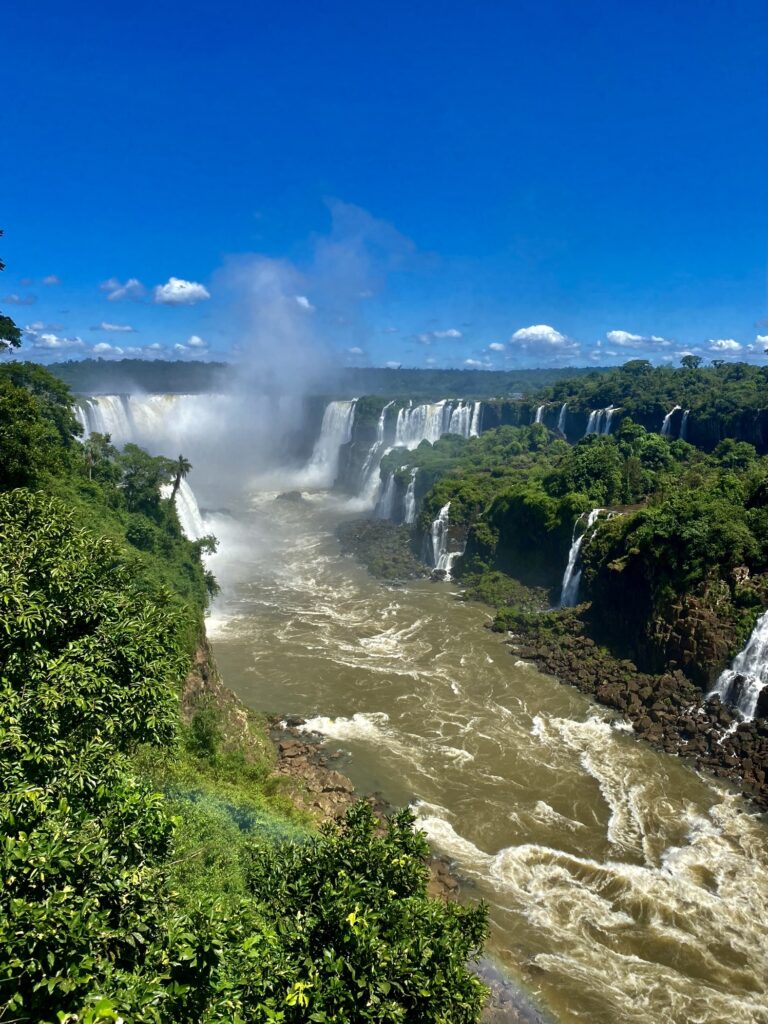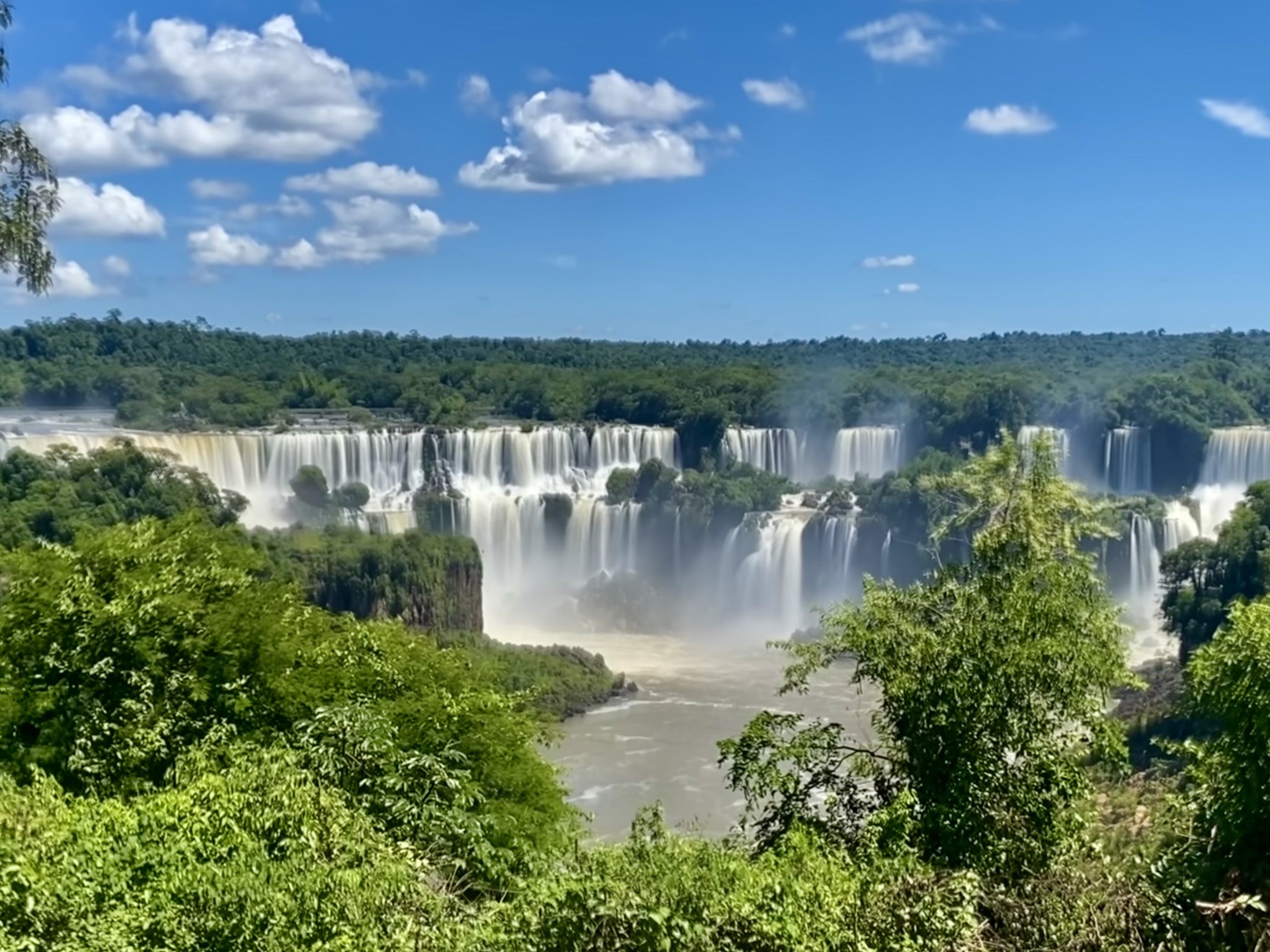We almost missed it. Though we prefer to slow travel, sometimes you only need a night or two in certain locations.
We created a multi-step journey from Argentina to Brazil that would give us the opportunity to enjoy the majestic Iguazú Falls.

Unfortunately our flight from Buenos Aires to Puerto Iguazú (IGR) was cancelled last-minute due to a strike in Argentina. But we were able to take a very early flight the following day and still stuck to our touring plans. I’m so thrilled we got to see the falls.
What and Where are They?
The Iguazú River runs through Brazil for most of the run, but then forms a border between northern Argentina and southern Brazil. The falls form part of this border, and there are national parks on both the Argentine and Brazilian sides of the falls. The border with Paraguay lies close to the west, creating a neat intersection in South America.
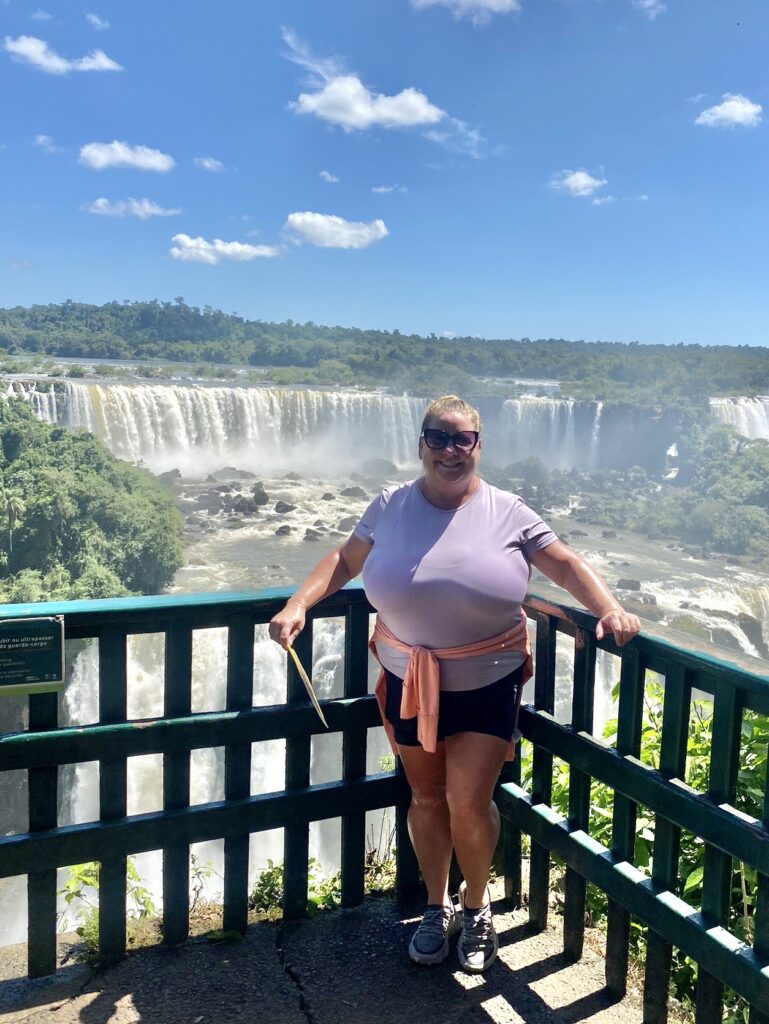
Iguazú Falls is arguably the largest complex of waterfalls in the world, with between 150-300 delineated waterfalls or cataracts depending on the water level.
The word Iguazú means “big water” in the local Guarani language. On the Brazil side the same word is Iguaçu or Iguassu (in Portuguese).
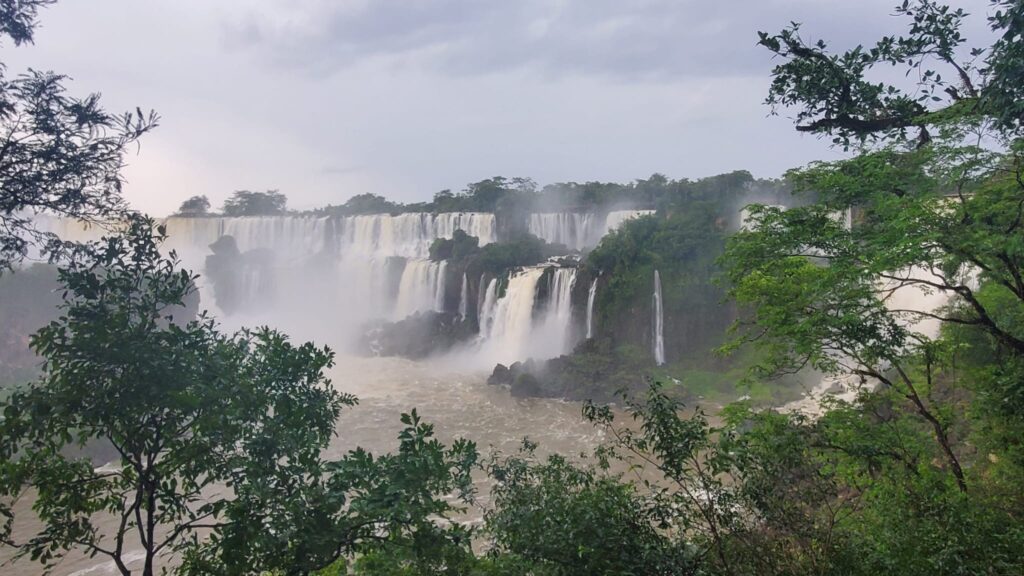
Day 1: Argentine Side
Our plane landed in the middle of the Atlantic rainforest. As the plane approached all I could see from the window was bright green jungle. It was also only 7 AM.
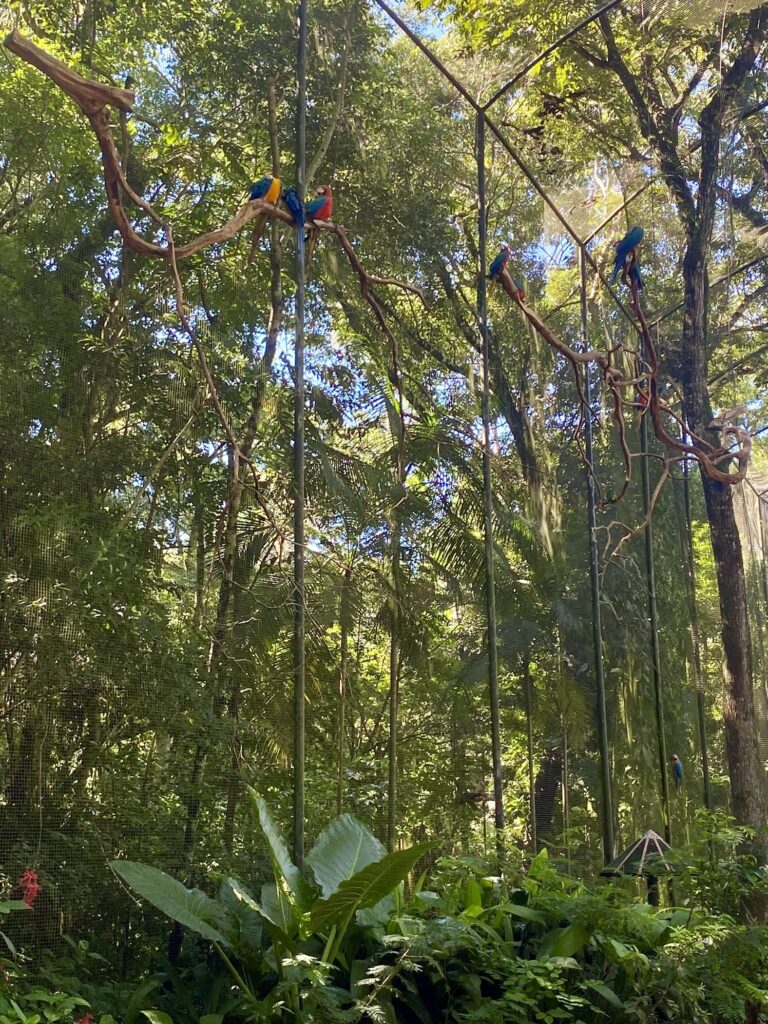
We dropped off our bags at our centrally-located apartment rental in Puerto Iguazú. After taking care of an errand we headed off to the falls by Rio Uruguay bus. It cost about $6 USD per-person, round-trip. The bus starts at the central bus terminal and drops you off right at the ticket booth and entrance to the national park. Oddly, it seemed to turn into a local bus once it left the bus station, as the bus stopped occasionally to let locals on and off. We were the only tourists on this ride.
While we took the Rio Uruguay bus from the Puerto Iguazú station to the Argentine park entrance, there are also buses that will take you from the Puerto Iguazú station across the border to the Brazilian park entrance. More on that in another post!
The weather was stormy and it was midday by the time we arrived. We think that we avoided the surge of tourists when the park opens. We learned that about 5,000 visitors enter the park each day and were warned that the paths are typically packed. But the rainy weather may have deterred the crowds.
Entrance to the Argentine park was around $20 USD. Credit cards are accepted.
We waltzed in under rain clouds and signed up for the boat tour immediately. The next tour was only a 20-minute wait, giving us time to grab some quick food at La Selva, a pay-by-weight restaurant inside the park. The food was okay but very expensive for Argentina. While we ate the clouds dispersed and the sun shone brightly.
The boat tour was the part of the experience I was most excited about. And it did not disappoint! The excursion lasts about two hours and includes an open-air truck ride through the jungle.
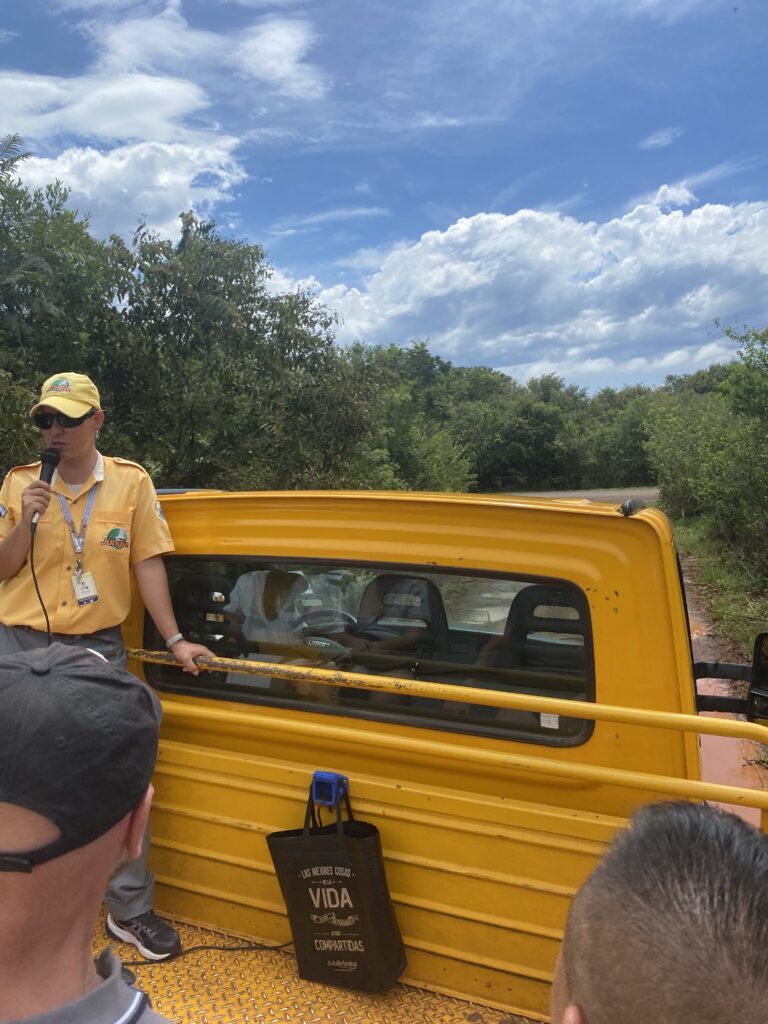
We also walked down about 300 meters down to the river. Guides provided life jackets and dry bags.
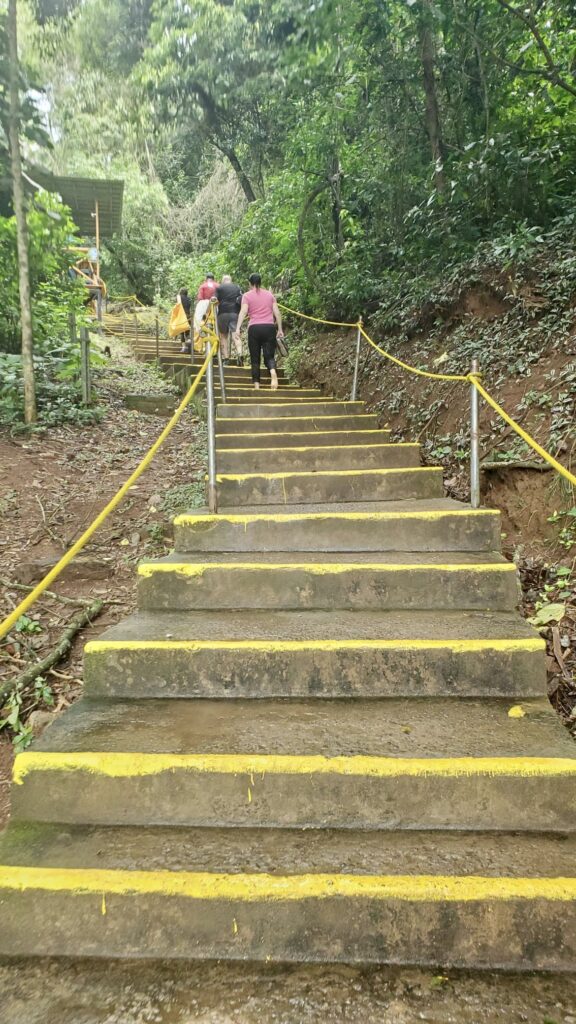
The speedboat zoomed off down the slightly brown river and toward the rapids and waterfalls. The travel to and from the falls is a swift ride through the rapids, and the boat jumps and moves. A very different experience than our oar boats through the Grand Canyon.
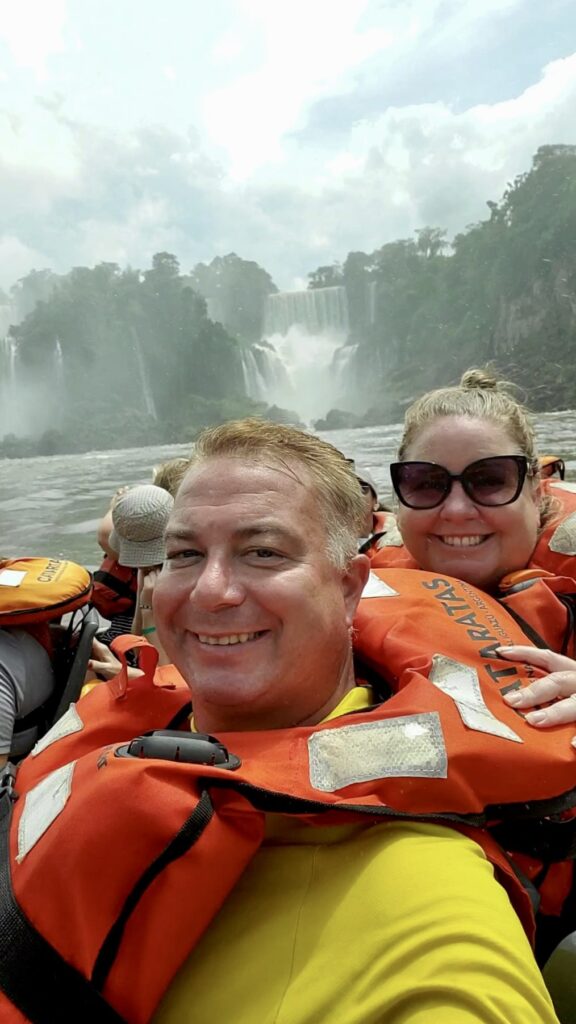
At this point we hadn’t done any trekking so our first sight of the falls was from the boat as we approached.
Once in the vicinity of the falls we started to feel their awesome force, as the wind pelted our faces with water. I was worried about losing a contact!
I had taken the boat excursion around Niagara Falls several years before and it was incredible. The Iguazú boats add a tad more adventure: the boat actually drives through the falls!
Here is a photo from the tour company:
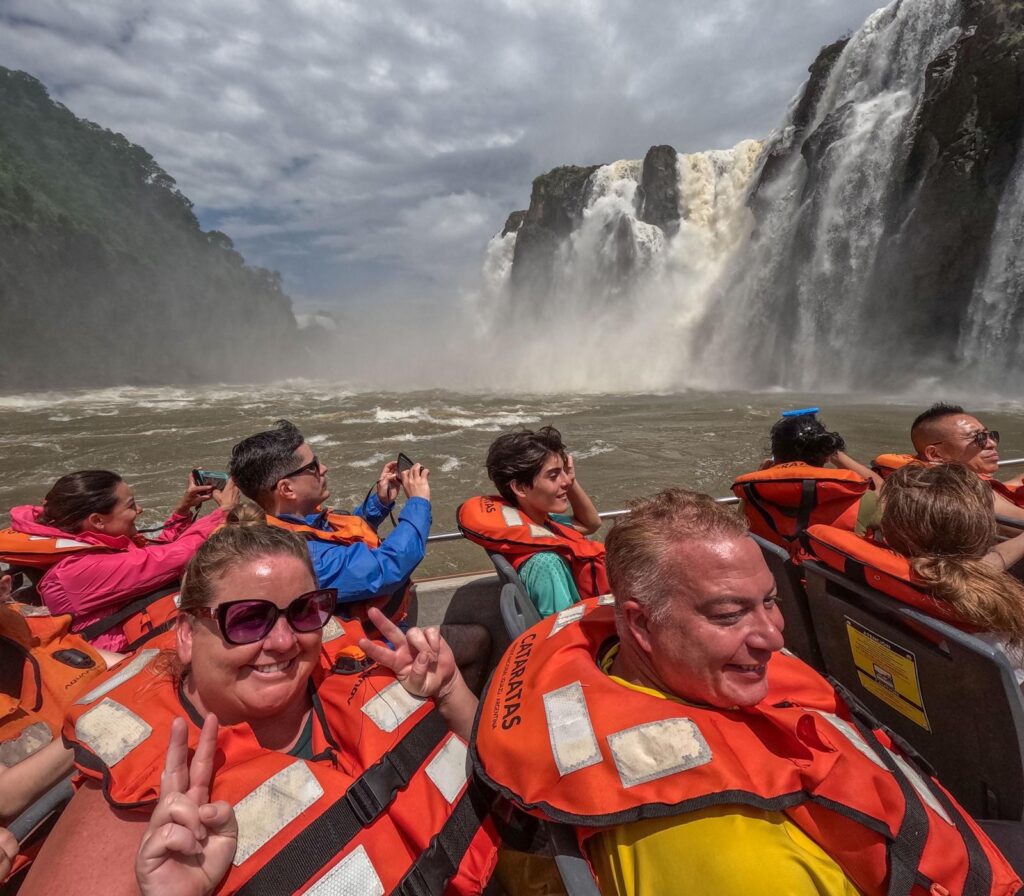
The boat drives the full extent of the falls, taking passengers under the falls twice. It was a refreshing shower and pleasant cool down. You come out completely saturated! This video on our YouTube shows a boat emerging from the falls.
Corey thought the experience was just okay for the cost. The boat tour is around $50 USD per person, with credit cards accepted.
After, the truck drove us deeper inside the park and we had plenty of time to walk both the lower and upper trails. The only section we did not visit was the famous Devil’s Throat. That trail is still closed from damage caused by the November 2023 flooding.
The Trails
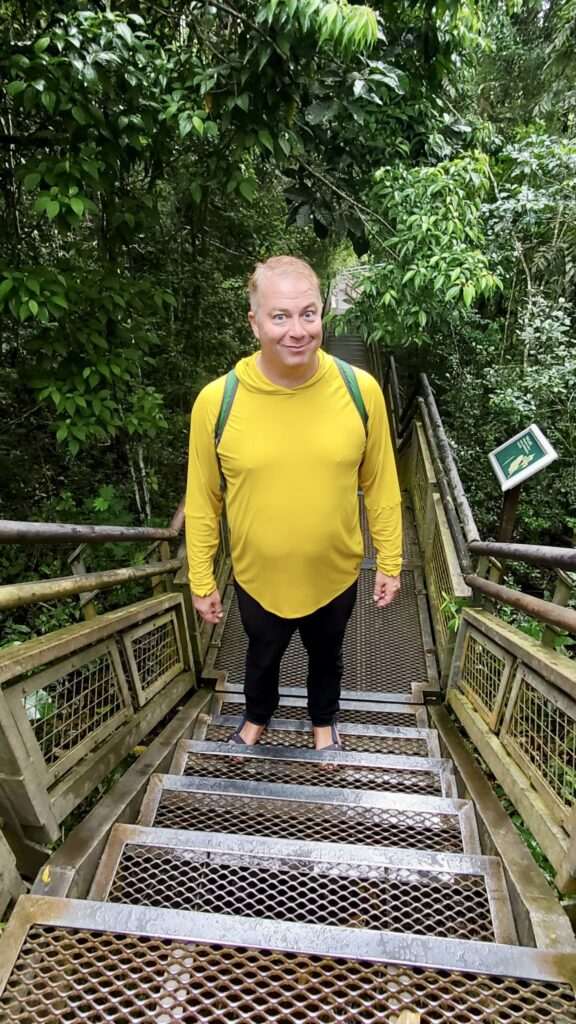
We started on the lower trail and meandered through. There were some nice viewpoints to the falls up and around the corner. The trail snakes around the lower section of the falls until you’re eventually at the start of the upper trail. It’s been constructed efficiently for visitors.
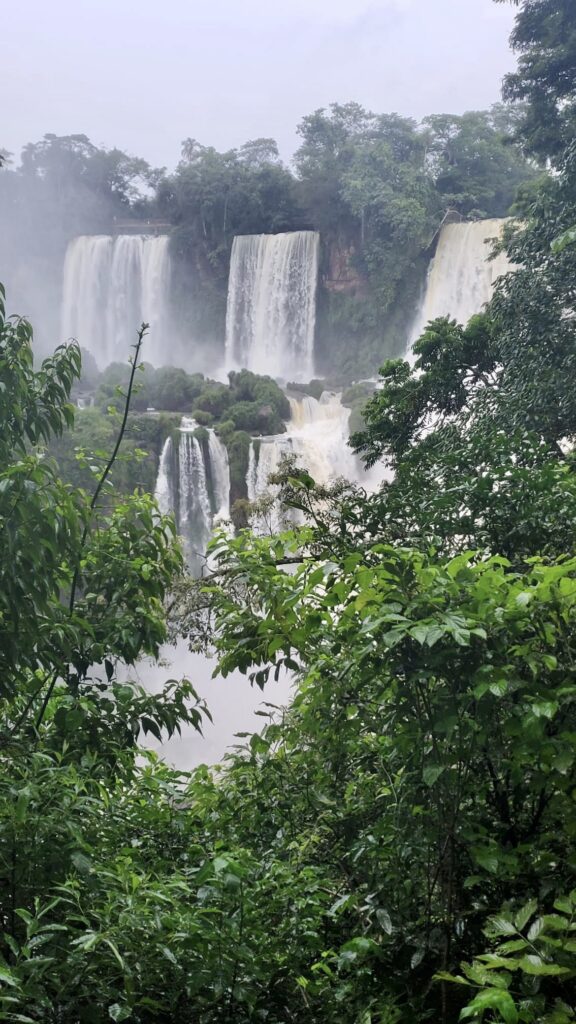
The upper trail has long catwalks over each of sections of rushing water which I found to be really scary. The pathways are made from sheets of metal lattice, meaning they are see-through and slippery when wet (and they will be wet). At times the path was only eight feet away from the vertical edge.
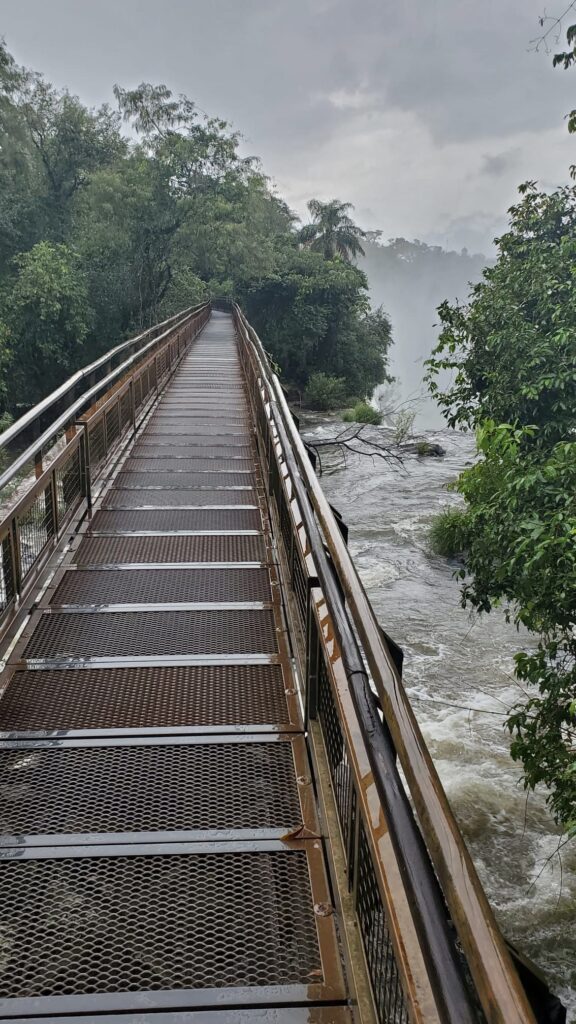
And to top it off, the old paths that did not survive previous floods can still be seen sticking up out of the river. Example below:
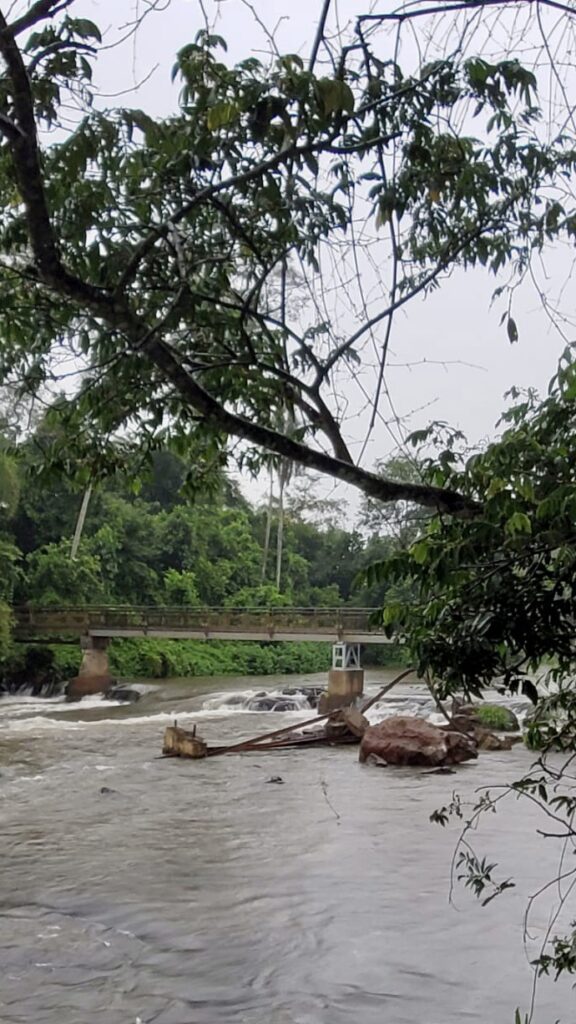
I did not want to continue, but the trails are one way and I respect the rules. I forced myself to keep going, and ended up enjoyed seeing the falls up close.
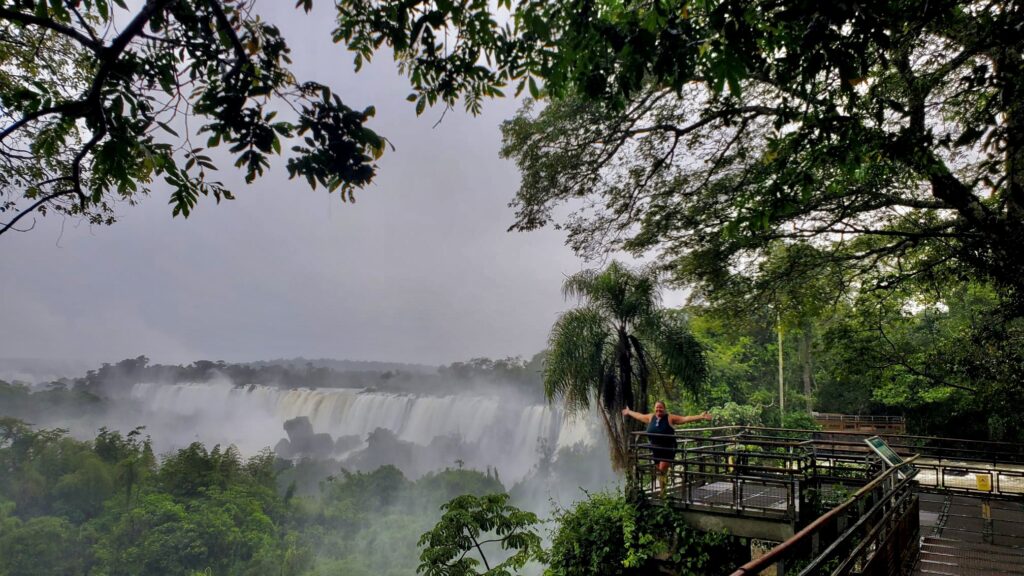
It was late in the afternoon by the time we started the upper trail. In fact, we made it just a few minutes before the trail closes. Again, the park felt empty and we enjoyed many viewpoints by ourselves.
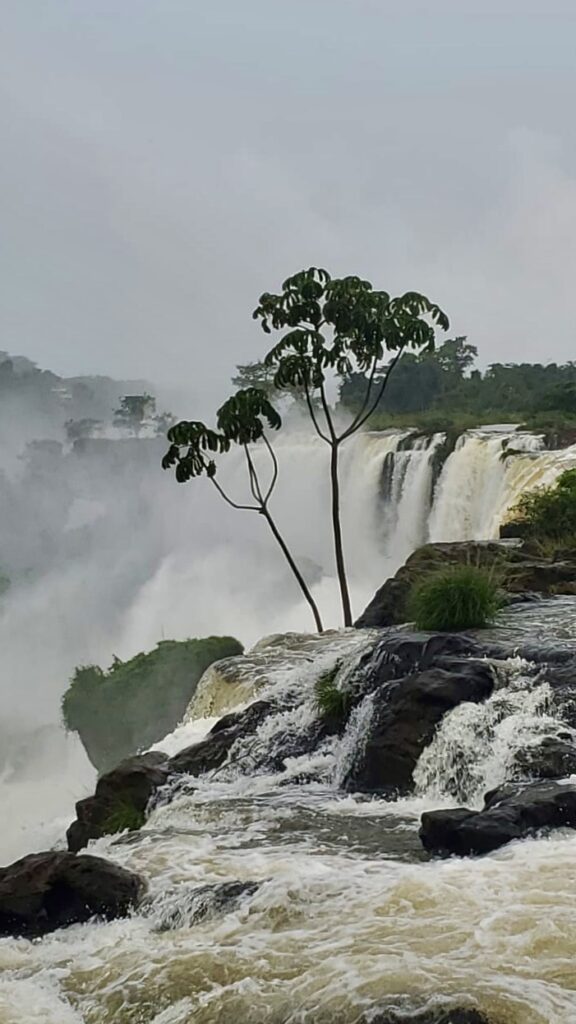
What was really neat about the upper trail is that we were right on top of each thunderous cataract. We could see and hear the roaring water as it plummeted down hundreds of feet. The Argentine side is really about being on and close to the falls.
Once we finished the Upper Loop Trail, we boarded the park train to take us back to the entrance. Normally this train would also take visitors out to the Devil’s Throat viewpoint trail, but with that trail washed out, the train only goes on the first half of its route.
And that wrapped up our first day at Iguazú Falls.
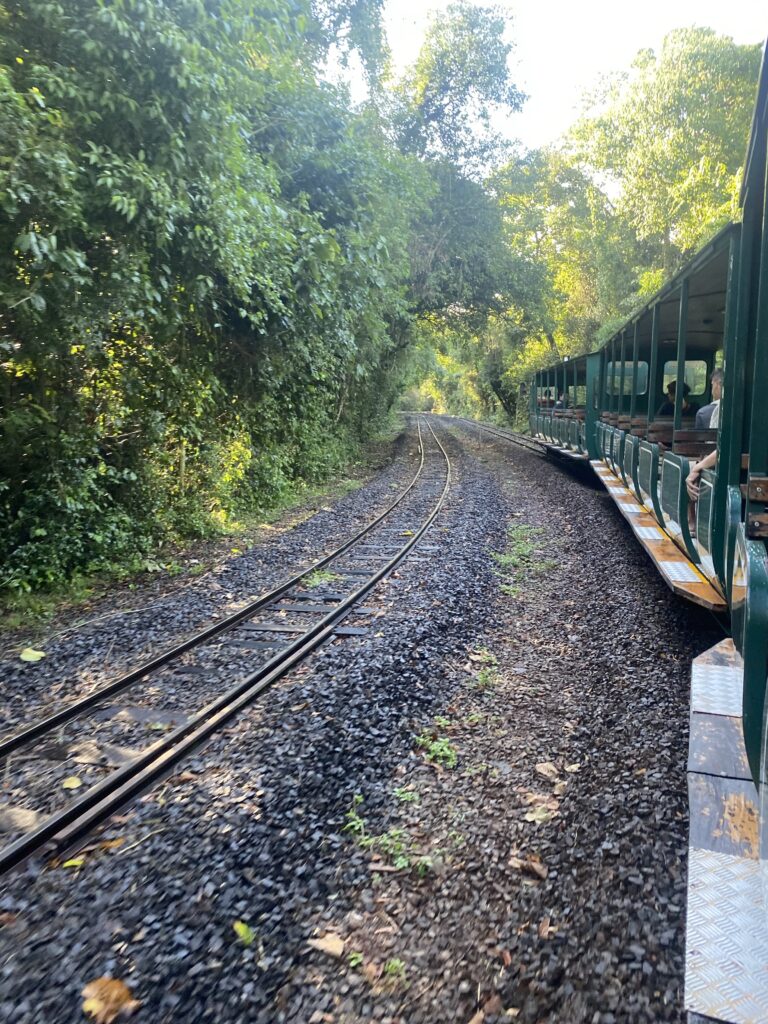
Day 2: Brazilian Side
The Brazil side offers a totally different experience: Panoramic vistas of the falls.
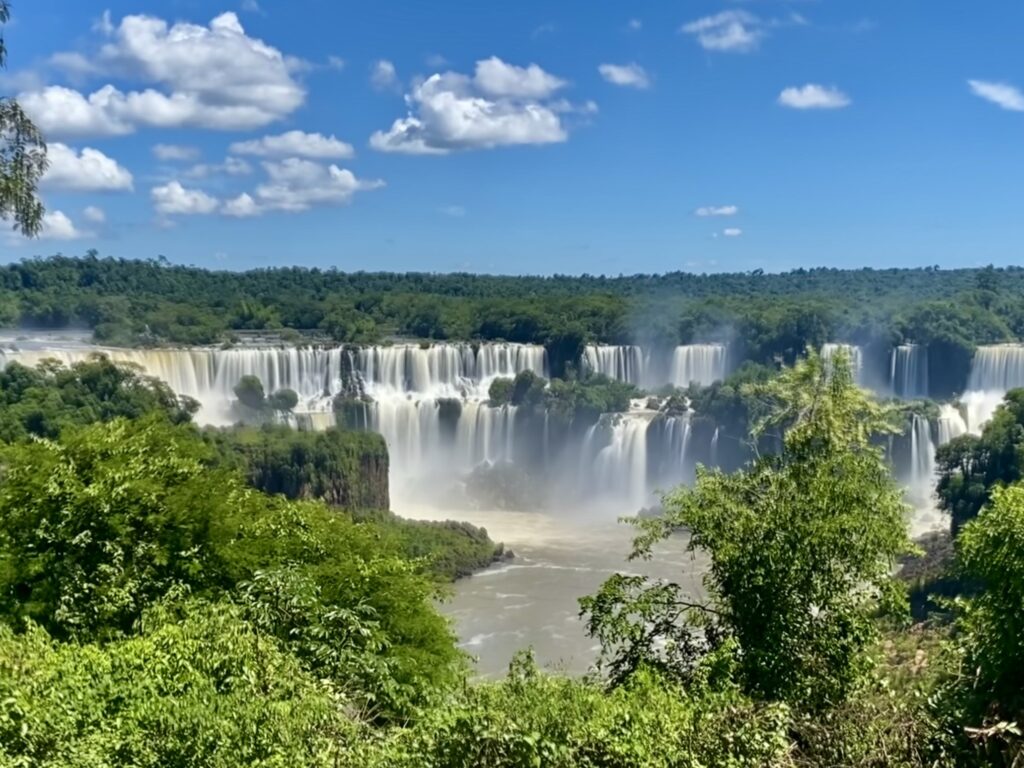
We crossed the border using a previously booked driver service, Iguazu Falls Travel. This expedited our border crossing into Brazil and we had a driver watch our bags for us. Read more about the experience here.
Entering the Brazilian park is also around $20 USD, with credit cards accepted. A double-decker bus takes you from the visitors center to the start of the viewpoint trail.
The trail is mostly carved out of the earth and takes visitors down a slight incline for just over a mile – the views improve as you walk.

The first viewpoint is of some of the falls that we had seen the day before on the Argentine side. We watched the boats maneuver around and under the falls, just as we had done. (The Brazil side also offers a similar boat experience to the Argentine side.)
The trail was a little busier as yesterday’s clouds had dissipated and it was a beautiful sunny day. We made a friend while we were walking, Asif Aslam, and he took some photos of us. It was nice to have someone who knows how to capture a moment offer to take our picture.
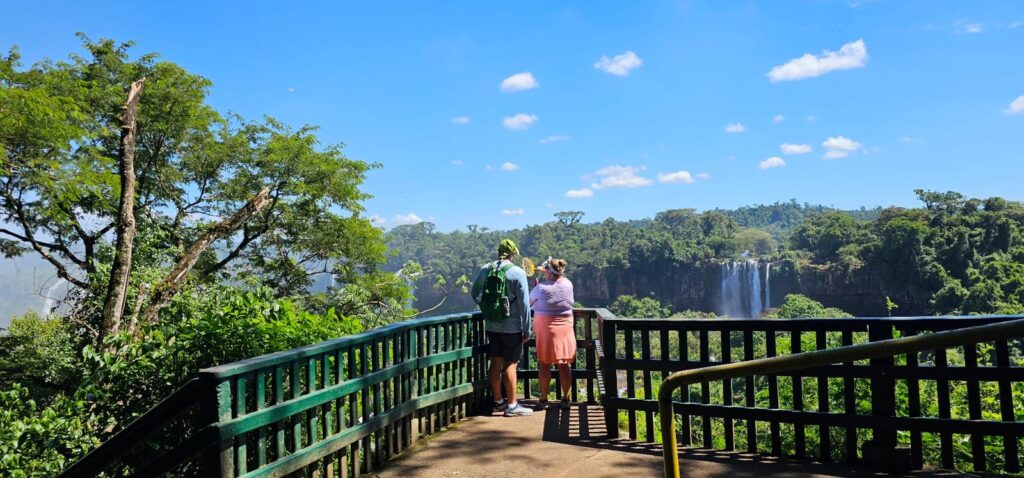
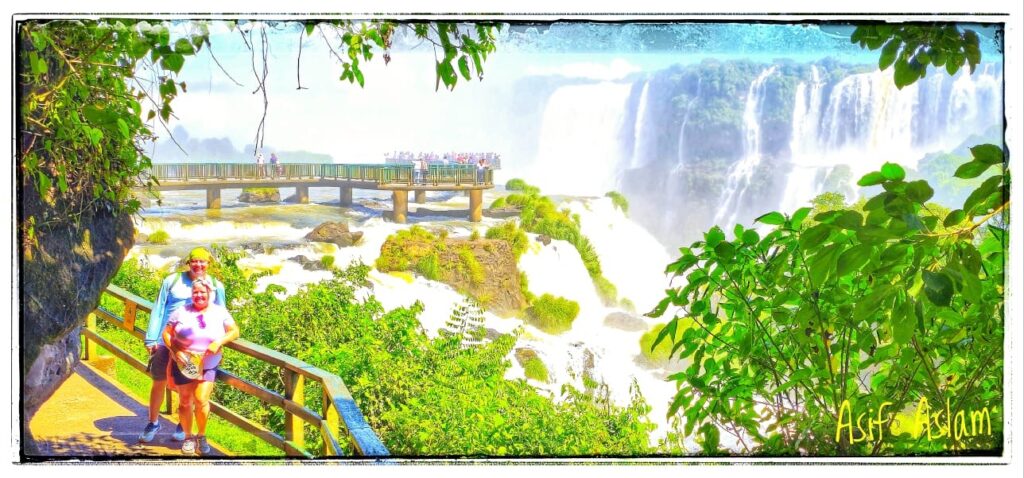
As the trail heads closer to Devil’s Throat, more powerful waterfalls appear. Eventually we were a mere few feet away from the pounding water. It is in this area that the trail turns into the metal catwalks that were familiar to us from Argentine side. (Not my favorite!)

There is also a stretch of catwalk that takes you over the edge of one of the waterfalls. It is really windy and wet, and there is a concessionaire selling plastic ponchos. I did not go out to the edge but Corey did, and he came back almost as wet as the day before. The spray and the shade was a nice respite from the heat of the day, as we were quite sweaty by the time we reached this point of the trail.
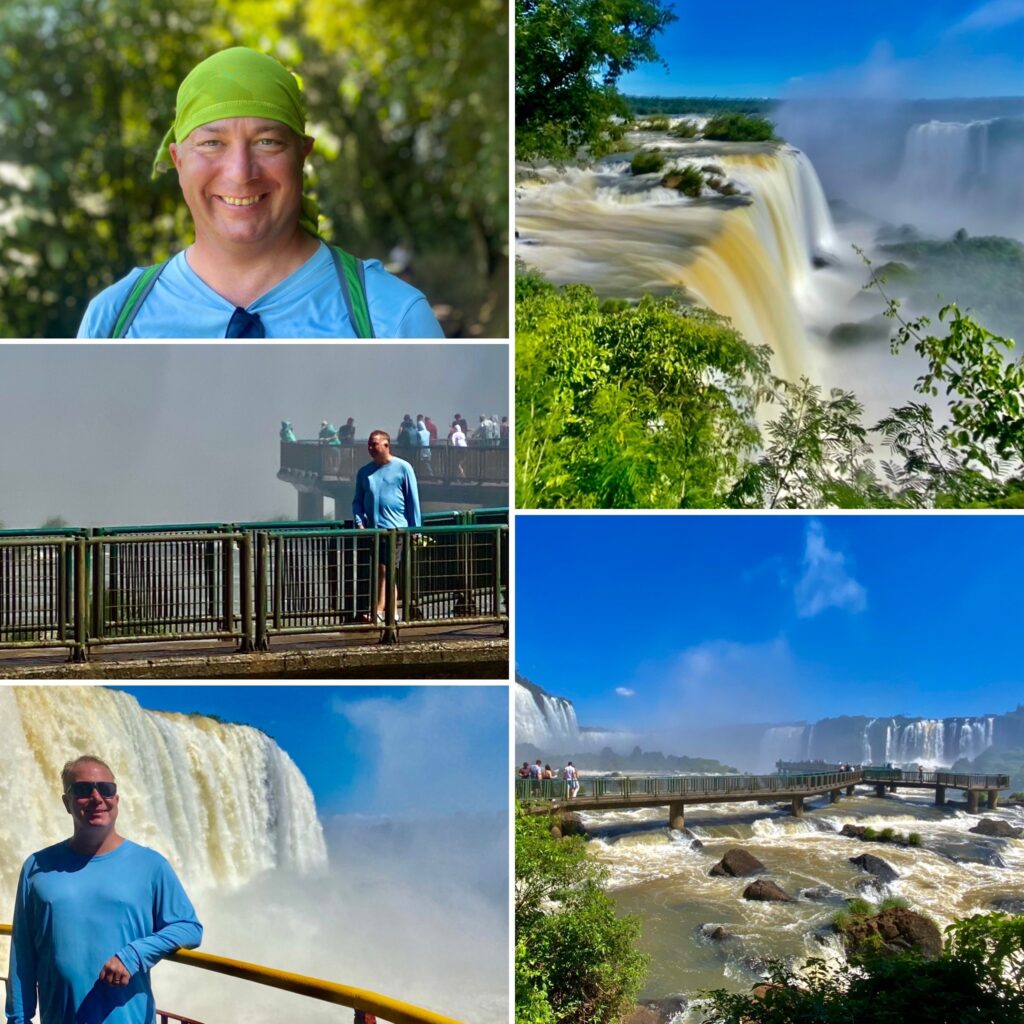
To get back up to the road, there is an scenic elevator (reserved for those who need it) and a pathway. The path had some final viewpoints that were without crowds, and we had a little fun taking pictures with our tripod and remote.
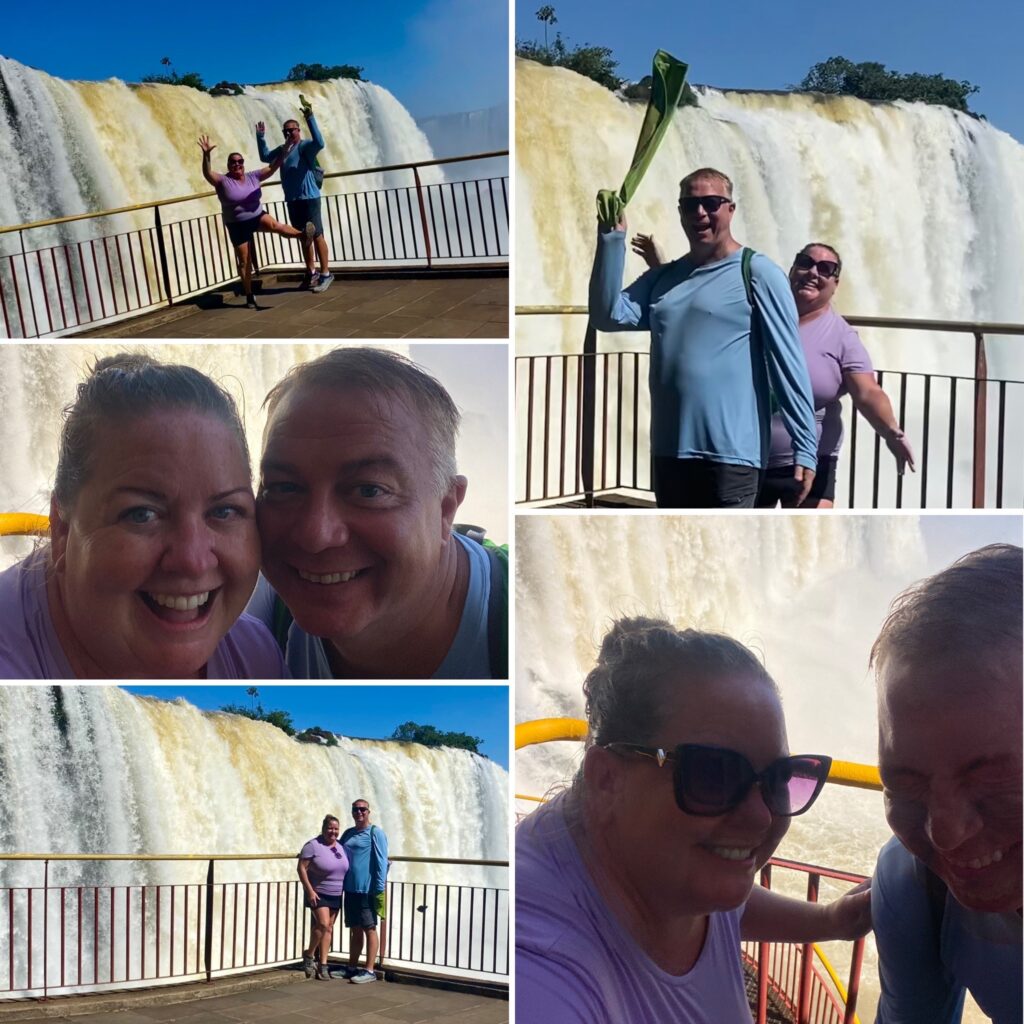
Parque das Aves (Bird Park)
I didn’t have this place on my radar at all but our taxi driver recommended it and Corey parroted back the words to her so she stopped.
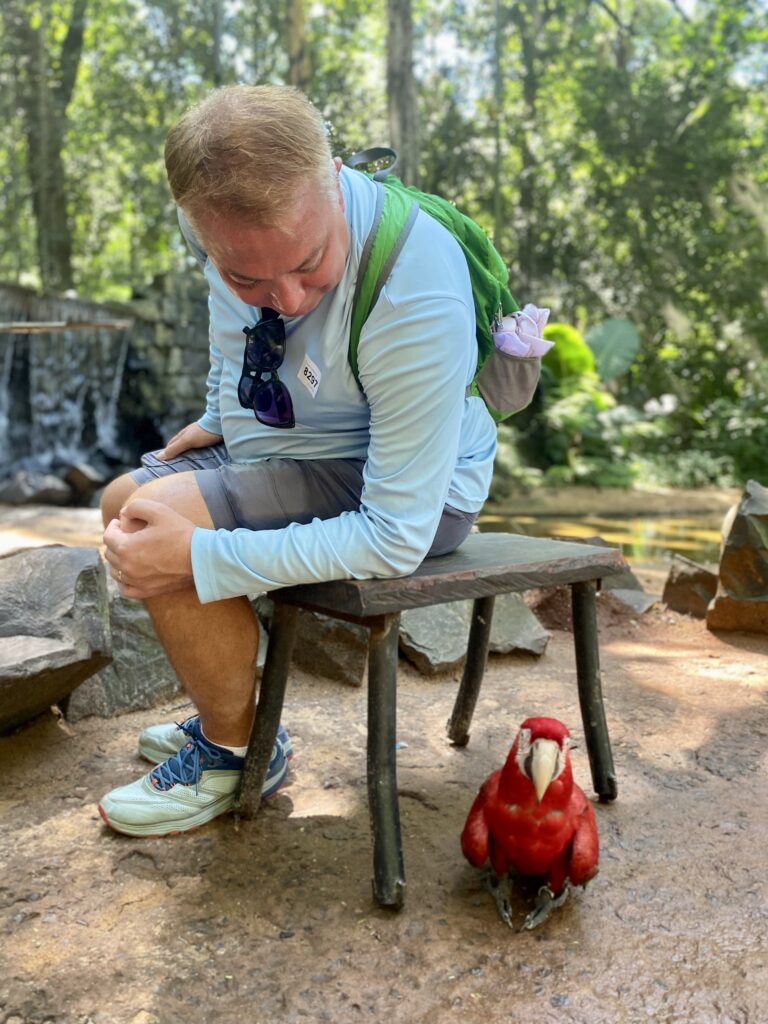
It is located just outside the gates of the Brazilian national park, and has a separate entrance fee of 80 Brazilian reals (around $16 USD), with credit cards accepted.
The park was incredible! We spent several hours walking around, admiring all of the tropical, rare, interesting birds and wildlife.
The park is arranged in a loop, and a sign at the beginning shows feeding times for four different areas of the park. Highlights for us were the feedings of the macaws and the scarlet ibises.
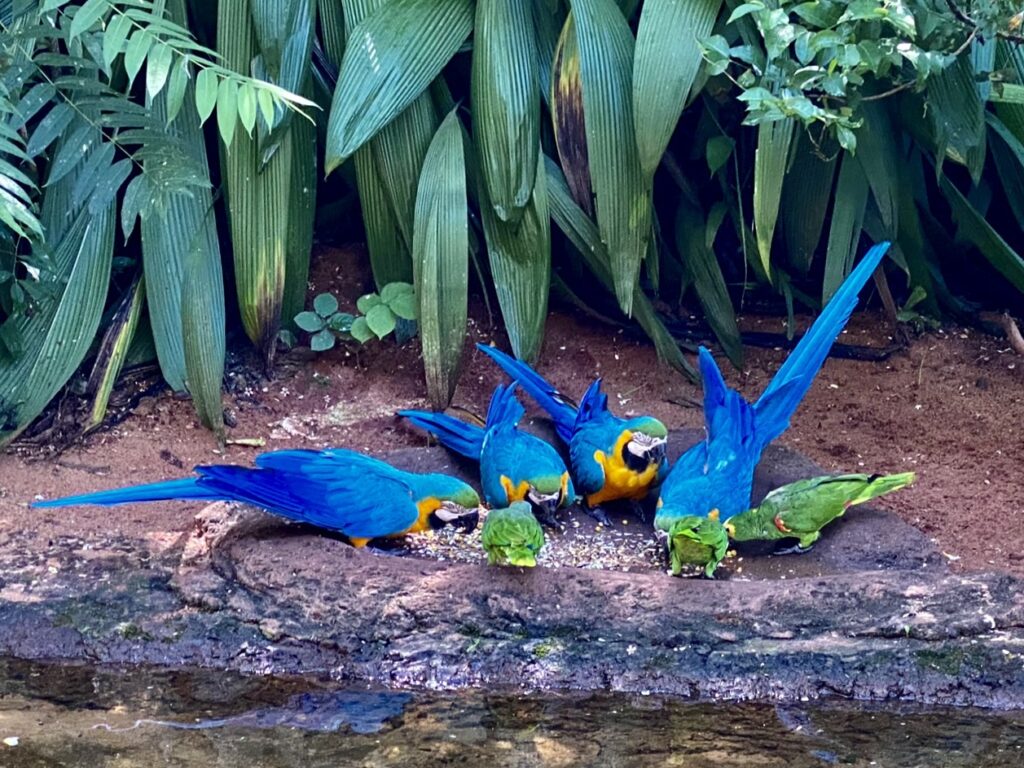
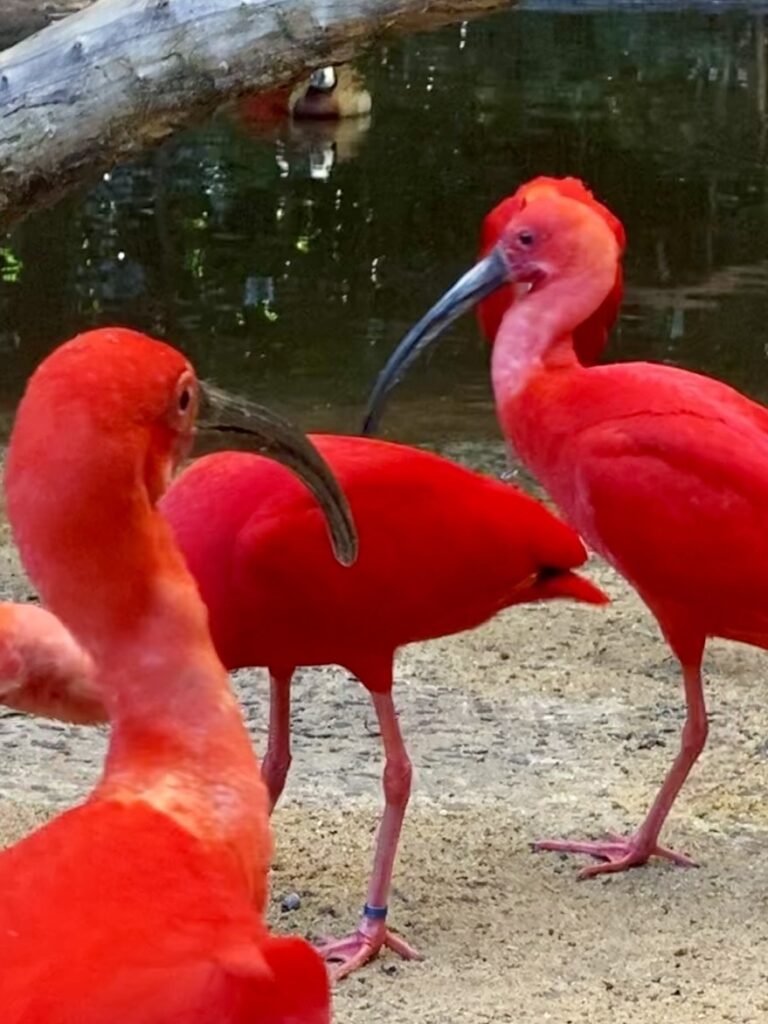
Because the loop is one-way, we found that we had to go through the park twice to see the feedings. This was okay because we ended up seeing animals that we missed on the first time through. There were lots of interesting birds like the toucans, a large flightless cassowary, and some goofy-looking owls.
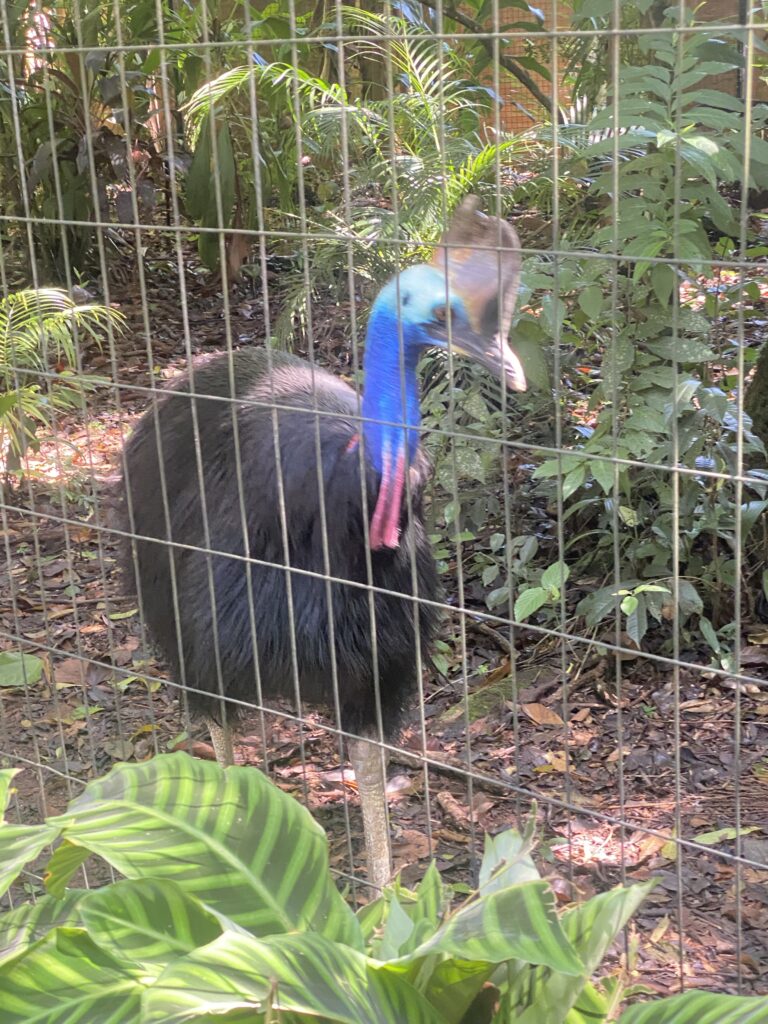
Of course, we also spied some flamingos!
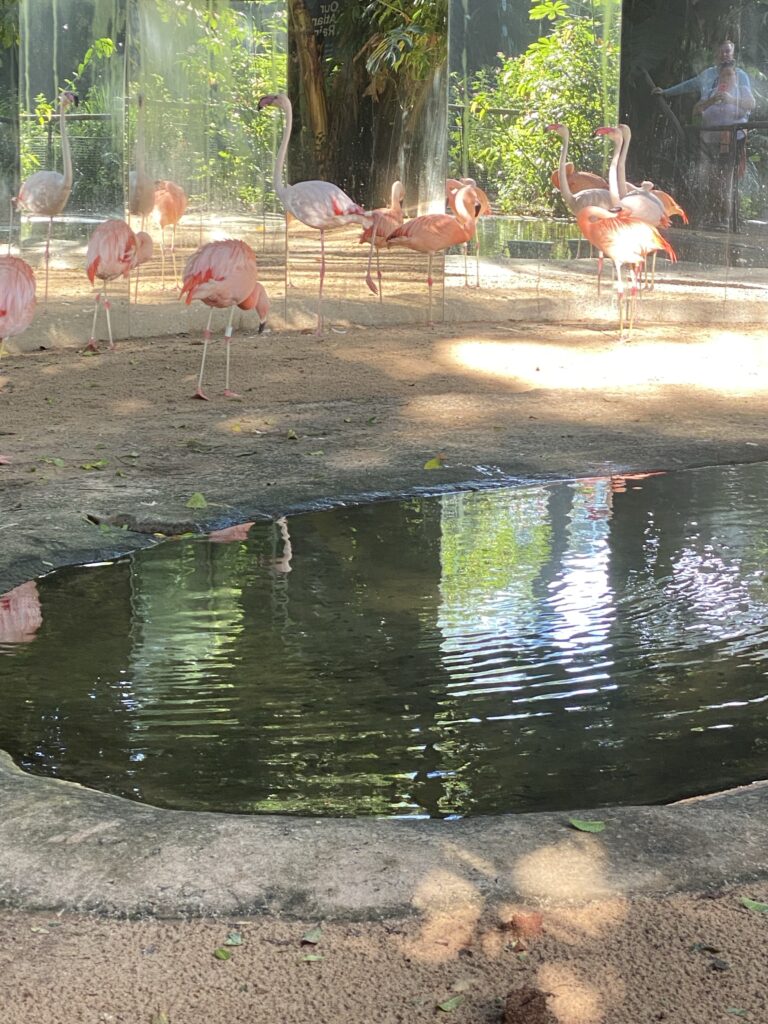
We had breakfast and lunch in the park and it was affordable. We were so thankful to have some delicious Brazilian coffee.

Our day ended at Foz do Iguacu (IGU), the Brazilian airport. We spent the afternoon in the two cozy lounges accessible with Priority Pass, while we waited to board our flight heading north to São Paulo, Brazil.
I’m so glad we got to experience Iguazu Falls while in South America. Both sides offer different but incredible experiences! We hope that you get to make it there one day.
